Olde Towne Gaithersburg is home to three small museums that loom large in local history. The Gaithersburg-Washington Grove Fire Museum, the Gaithersburg Community Museum and the Gaithersburg Latitude Observatory, located within a mile of each other, are historical sites that show off Gaithersburg’s past.
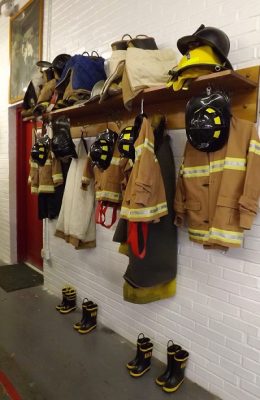
The City has preserved the Fire Museum so it may continue to share the stories of the Gaithersburg-Washington Grove Volunteer Firefighters. Just a few blocks away, the Community Museum provides historical context for Gaithersburg natives and transplants alike to learn more about their home. On its busiest days–Fridays and Saturdays– as many as 50 family groups check it out. Visitors to the Latitude Observatory range from young adults in meet-up groups to families to older adults, with from 50 to 500 visitors turning out for some of its events. The Pleiades Meteor Shower in August had the highest attendance in 2016.
All three museums are funded by the City of Gaithersburg, which receives a grant from the Maryland State Arts Council to subsidize cultural programs. The Fire Museum also gets support from the Fireman’s Fund.
Built in 1930, the Fire Museum was originally the Gaithersburg Washington Grove Fire Department’s home. The station relocated to Montgomery Village Avenue in 1978. After years of neglect, the old station was revived in 1996, and the museum opened to the public the following year.
Today, the museum is run by co-directors Garry Walker and Bob Harding, both graduates of Gaithersburg High School. “We all grew up together, we all served the fire department together, one big happy family,” said Harding, who has been a fire department member for 57 years.
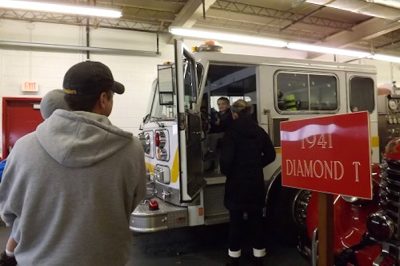
The main room features decades-old memorabilia including awards, gear, mannequin firefighters Rudy and Trudy in Class-A uniforms as well as a 1,000-pound Smokey the Bear statue. However, the museum’s true showpieces are in the engine room: a 1941 red Diamond-T pumper and a 1983 Seagrave. The City has Otis Kent, a career firefighter in Lima, Ohio, to thank for its Diamond-T, which is now completely restored. With his sideline business of firetruck restoration, Kent repainted the truck’s gold leaf stripe design and restored its engine.
These days, the Diamond-T’s excursions are restricted to local parades. Although the Seagrave hasn’t made the trek to Ohio, it was part of regular fire department runs in the 1980s, and later used by the county government for training purposes. Today, the 1983 is back at home base, where it is on display, restored and ready for children to play on.
Harding derives great pleasure from the museum’s youngest visitors. “When you see the kids sitting up there in the fire truck pretending that they’re driving and they’re grinning from ear to ear, and want mom and dad to take a picture,” he said.
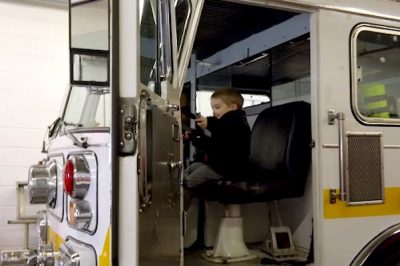
The family-friendly museum also offers freebies from coloring books on the “ABCs of Fire Safety” to bright red fire hats. Schools can book the facility for fire safety classes led by Gaithersburg volunteer firefighters, and CPR training is offered from 2 to 5 p.m. on the third Saturday of every month.
With its history rooted in the Baltimore & Ohio Railroad, the Gaithersburg Community Museum is housed in the station’s restored 1884 brick Freight House. Bordering the train tracks, trains as well as train aficionados still pass through the area. Outside the main museum building is the History Park, which features plaques with historical photos and information about the City’s history and development. Among its plantings are original peonies from the garden of the Schwartz family, which once owned the home that now serves as Gaithersburg’s City Hall.
The building houses a gift shop as well as a general store, an interactive bank and classroom and even a telegraph machine, all contributing to a child-friendly place. The classroom, built by the Parks Crew in 2010, replaced the museum’s model train set exhibit, which was on loan from the Rockville Model Railroad Society. Lottes said the train was removed because it did not have a link to Gaithersburg history. The model train, which took up nearly a third of the museum, has found a new home in Silver Spring. In the yard outside, a rolling stock exhibit features a black 1918 Buffalo Creek and Gauley #14 Steam Engine, a red C&O Railroad Bay Window Caboose and an 80-foot Budd passenger car.
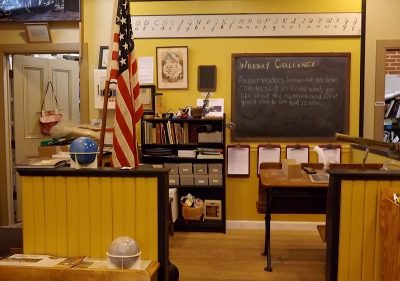
Maryland natives Karen Lottes, program coordinator, and Nansie Wilde, Gaithersburg facility manager, run the Community Museum, which the Gaithersburg Historical Association opened in 1988. “The upside of working in a small, local museum is that we get to form relationships with our visitors and really see how much they enjoy visiting,” said Lottes. “We like to say “Community is the most important part of our name” and that isn’t just a saying.” For Wilde, “the best thing is interacting with people of all ages. People come from all over.”
A vintage spice rack and a container of dried beans sit on the museum’s front desk, functioning as a kind of exit survey for museum-goers. Each spice bottle is labeled with a yes/no statement such as “I am a Gaithersburg resident” or “I came to the museum with family.” Visitors are invited to put a bean in each spice bottle that is a “yes” for them. This gives the museum data about who visits the museum.
The Community Museum hosts events for all ages from family Discover Sundays to After Hours Talks. Stop by at 3 p.m. on Jan. 22 to prepare for the 2017 solar eclipse and on Feb. 26 for a history lesson on the Railway Mail Service. New events in the works include Teen Bad Movie Fridays, Local Archeology Day and “All Aboard with Santa,” a holiday scavenger hunt.
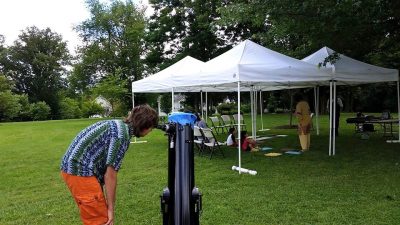
Built in 1988, the Gaithersburg Latitude Observatory was originally overseen by Edwin Smith, Assistant of the U.S. Coast and Geodetic Survey. Gaithersburg’s only National Historic Landmark is one of six international latitude observatories that measure the Earth’s wobble on its polar axis. These observatories closed when computerized methods were developed, but scientists still use the information they obtain to help predict earthquakes and determine satellite orbiting patterns for the space program.
The observatory sits on 2.3 acres of land, and was made part of a public park on May 12, 2011. The building is made from a mix of tin and pine, and features a roof that opens a whopping 6 feet, 6 inches on a rope pulley system to accommodate its telescope. The facility serves as a space for sky-watch events like meteor showers and solar eclipses.
The Gaithersburg-Washington Grove Fire Museum, 13 East Diamond Ave., is open Saturday 10 a.m. to 2 p.m. free admission, gwgvfd.org. The Gaithersburg Community Museum, 9 South Summit Ave., is open Tuesday through Saturday, 10 a.m. to 3 p.m., 301-258-6160, and the Gaithersburg Latitude Observatory, 100 Desellum Ave., is closed except for special events. The event calendar for all three facilities is online at gaithersburgmd.gov.